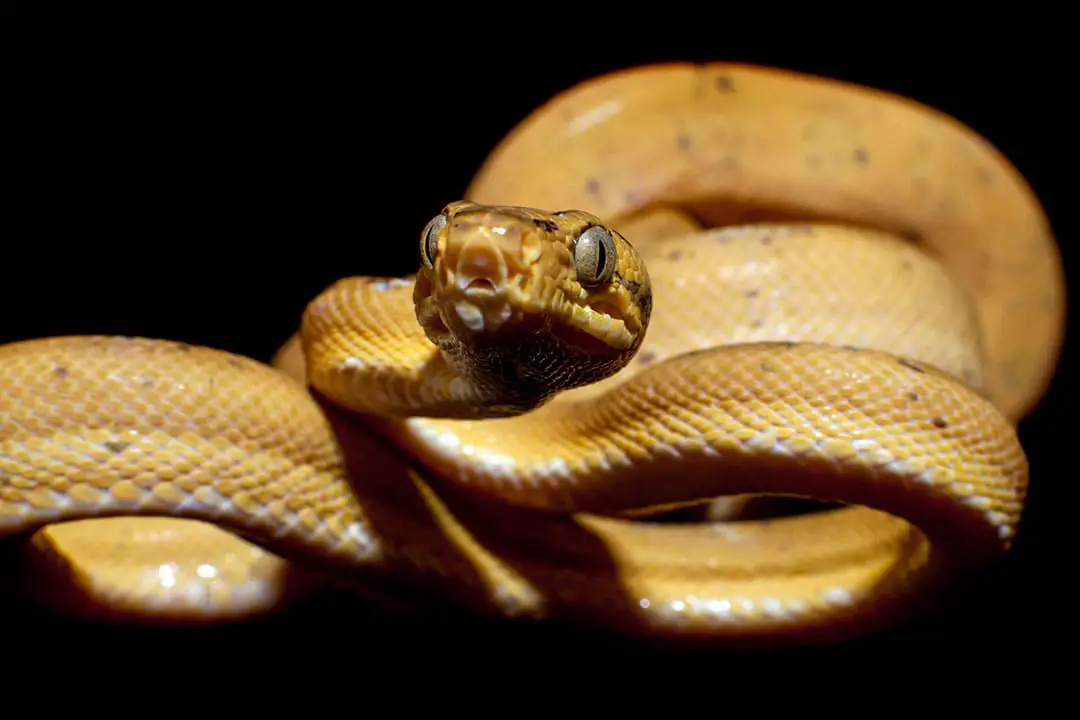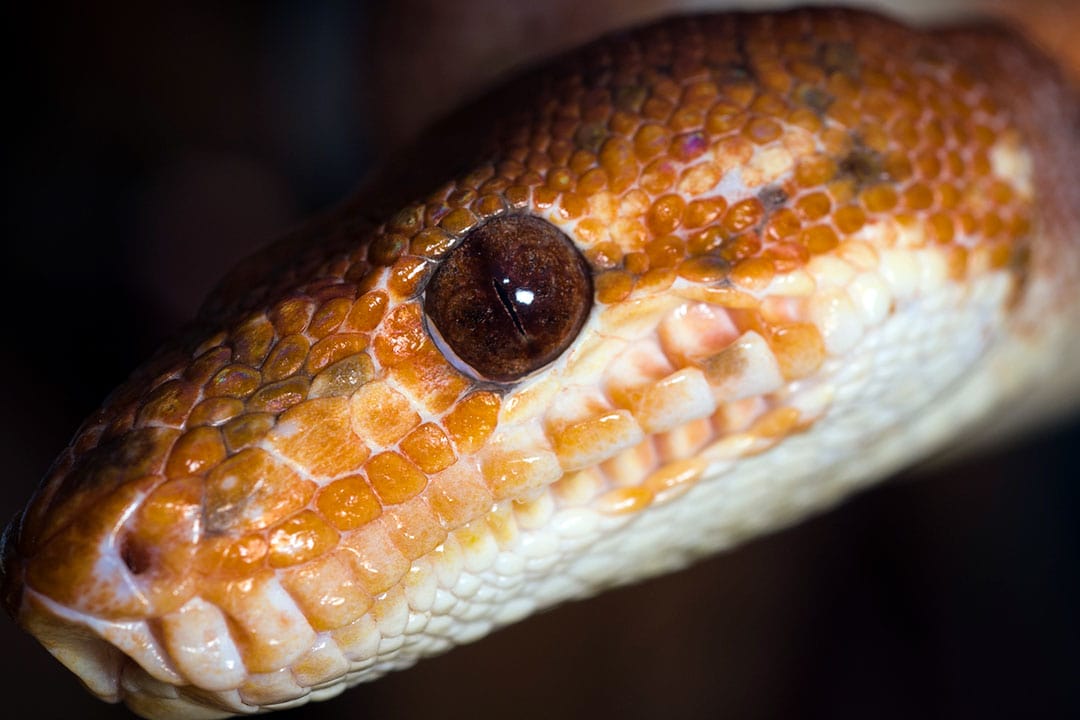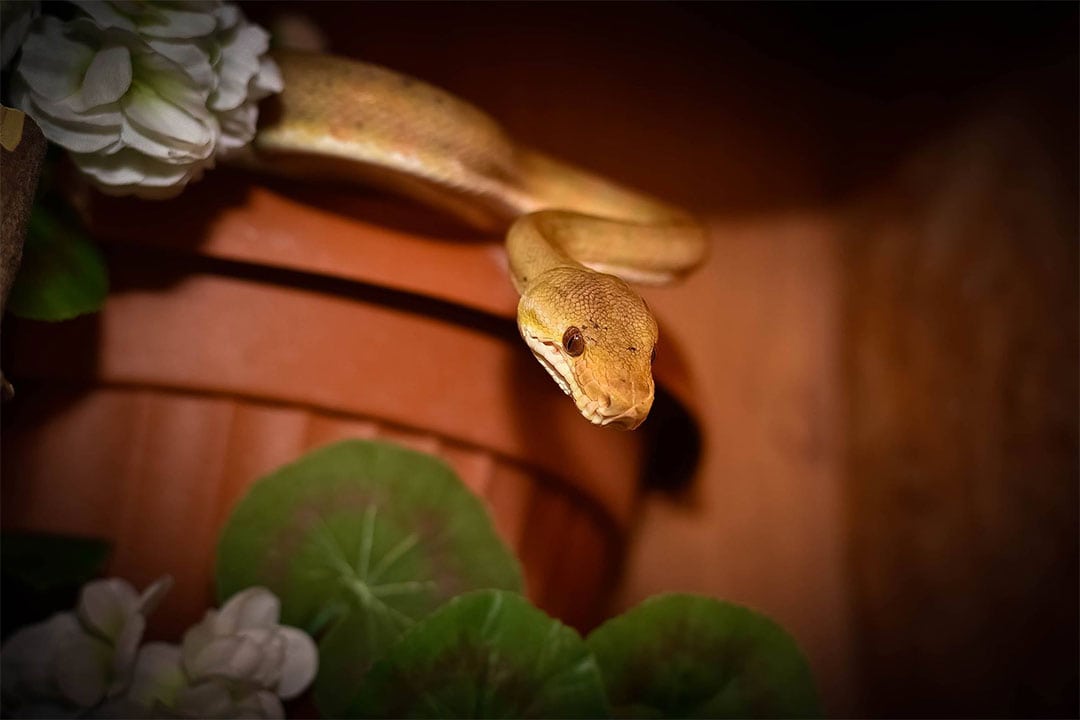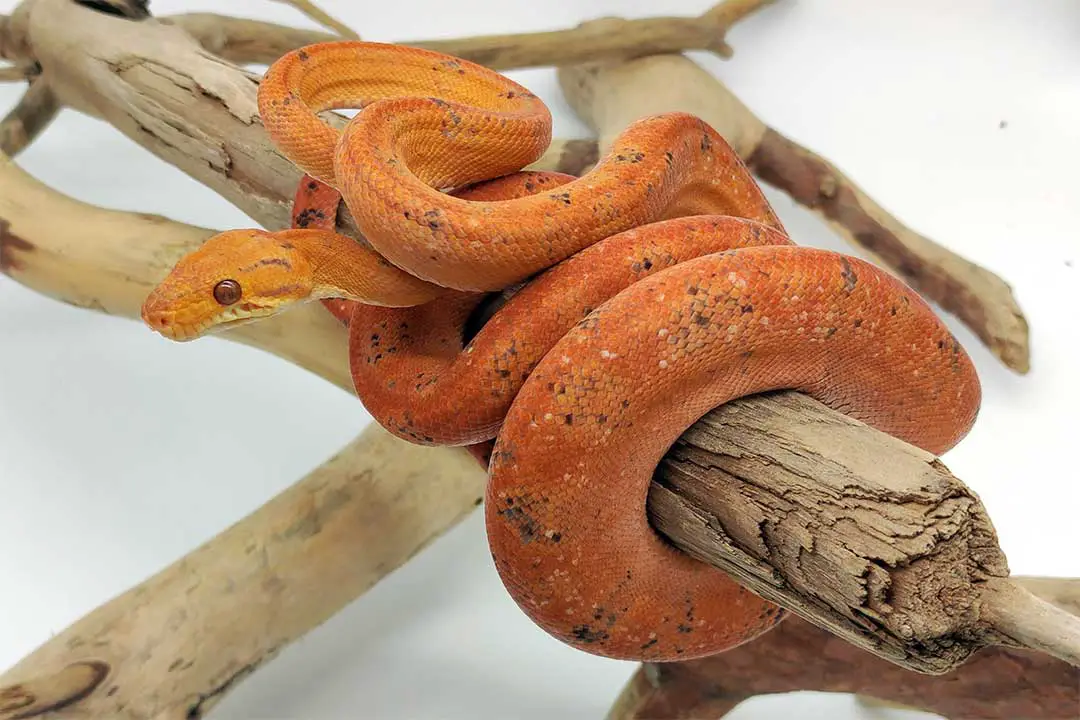Amazon tree boas (Corallus hortulanus) are a species of arboreal snake that live throughout the Amazon region. These snakes are active hunters and very good at catching prey.
These snakes are fairly common in the pet trade and are popular for the sheer amount of colors and patterns they come in. They are also famous for being likely to bite their owners. This may make you wonder if Amazon tree boas are venomous.
The Amazon tree boa is not venomous. Like most tree boas, they have large and sharp teeth for their size. However, these are not venom-delivering fangs. These sharp teeth are to catch prey so they can kill it via constriction.
How Amazon Tree Boas Hunt
Amazon tree boas are some of the most active hunters of the tree boas. They typically hunt at night and utilize their heat-sensitive labial pits to search for prey.
These snakes will range around the branches of trees and bushes looking for prey. Once they spot prey, they will secure the back half of their body and prepare to strike.
They will coil half their body in a distinct “S” pattern before striking. An Amazon tree boa can strike out up to half its body length. Since these snakes average 5 to 7 feet, they can easily reach 2.5 to 3.5 feet away.
This lets them catch prey from further away and helps lower the risk of the prey fighting back. These snakes also have long, sharp teeth that help secure prey.
Once the prey is bitten, the snake will draw its body back and wrap the prey in loops of the body to constrict it. Constriction kills quickly since it cuts off blood flow. These snakes do not have venom. No member of Corallus or the Boidae family in general has venom.
Are Amazon Tree Boas Dangerous to Humans?
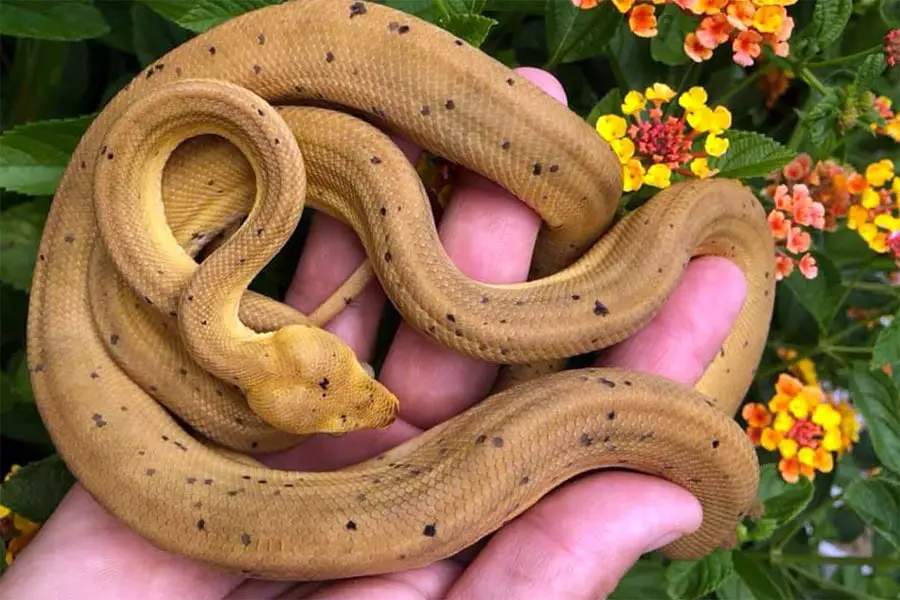
Everything you need to know about caring for Amazon Tree Boas in captivity:
Read our Amazon Tree Boa Care Sheet (Complete Guide)
Amazon tree boas are not dangerous to humans. First, they lack venom. You can get an infection from a bite, but all animal bites can become infected.
While they do have sharp teeth, even a full bite from an Amazon tree boa will only draw blood. The worst wound you could get from one of these snakes is if you pull back while they are latched on.
This could cause tearing of your skin. It will also likely harm the snake. These snakes are fairly small, even as adults. This means that they can’t do much to hurt you.
f you try to handle a captive specimen at night, this could cause a feeding response. Amazon tree boas typically hunt at night. They rely on heat-sensing organs called labial pits located near the mouth to hunt in the dark.
If you approach them, they will likely see your hand as potential prey and will strike. This may break the skin, but most people compare the pain to a bee sting. If you are bitten, you will need to clean and disinfect the wound. You likely won’t need medical attention, but you should be careful.
Amazon tree boas are also very defensive snakes. They can be tamed down, but many snakes will always dislike being around humans. Snakes will only tolerate humans.
You should watch for hissing or for the snake to coil up to strike. This means you are risking a bite. Defensive bites are rarely at full strength unless the snake feels very threatened.
Some Amazon tree boas can be tamed to the point they will tolerate handling, but this typically only happens with captive-bred animals. It is not guaranteed.
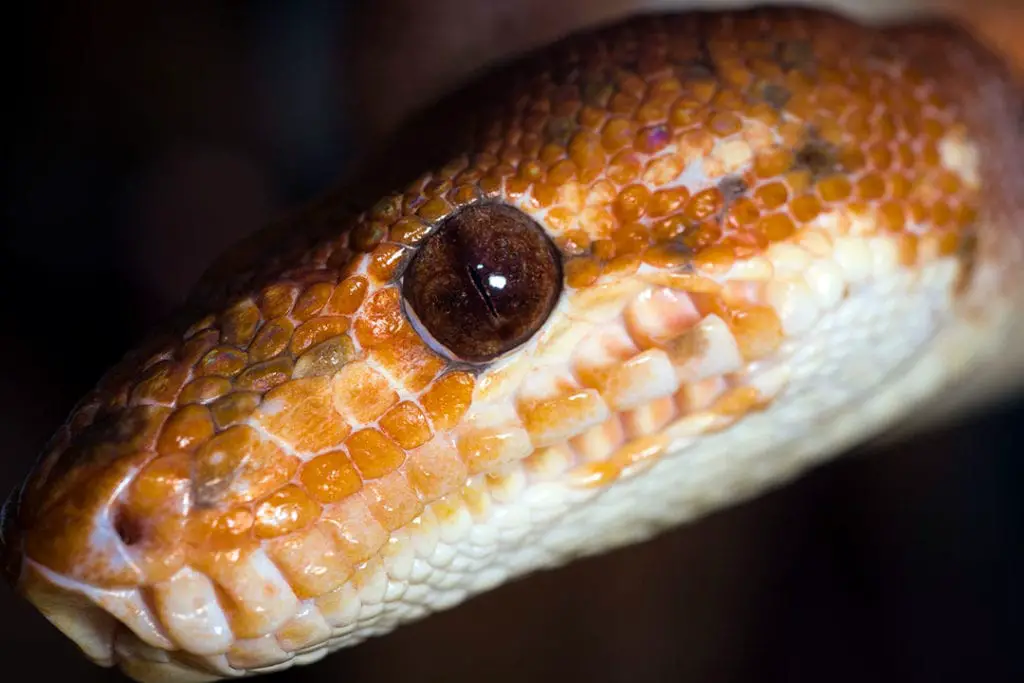
You can be sure that these snakes can’t do too much damage to you. They are small and can only bite so hard. They typically hunt for birds, bats, lizards, and small mammals.
Something as big as a human is not in danger from one of these snakes. They will never view you as potential prey if they can see your whole body.
You will be viewed as a predator and the snake will try to defend itself. You can get an Amazon tree boa to accept you in its enclosure by showing that you are not a threat over time.
They will learn that you aren’t going to hurt it and may leave you alone. Your snake will likely never be friendly, but if you are patient you can make basic care easier on both of you.
Always stay calm and make sure you keep the snake away from your face if it is coiling up to strike. A snake hook can give you distance so your snake can’t reach you.
Since the snake hook won’t look like food, your snake is also less likely to think it is food and try to take a bite.
If you still need to gain confidence, you can wear a thick glove to protect your hands. If you are very afraid of being bitten, this may not be the species for you.
Conclusion
Amazon tree boas are not venomous. They are arboreal constrictors that use their large teeth to help catch prey. They cannot cause serious harm to humans. See my article on how to identify venomous snakes.
They are defensive, but you can avoid bites by watching the snake’s body language since they will always warn before a bite. Most wounds from these snakes only require basic first aid.
You should make sure to clean the wound well since all reptile bites can cause infections. If you have any questions or comments, please leave them below.
